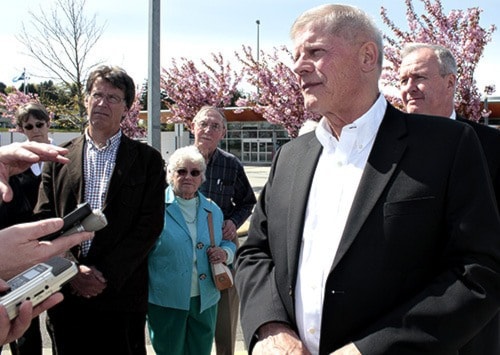Nanaimo riding candidates agree that change needs to happen to ensure a sustainable and affordable ferry system.
But their ideas for what needs to be done to keep the coastal ferry service afloat are all different.
Last fall, the province asked for public input on how to make the system more sustainable, including ideas on finding $26 million in savings over the next four years.
Rising costs and declining ridership are creating a financial crunch for the ferry system – B.C. Ferries lost more than $16 million last fiscal year and that is predicted to rise to $56 million per year within the next five years.
Before the election was called, the Liberal government was in the process of reviewing the thousands of comments it received during the eight-week consultation.
Liberal candidate Walter Anderson believes the province should stay the course on actions taken by his party so far and continue following the recommendations made by B.C. Ferries commissioner Gord Macatee – the Liberal government introduced several amendments to the Coastal Ferry Act last spring based on these recommendations.
“We are actively working on this,” he said. “Sustaining that system is very important to us and to the people of B.C.”
Incumbent Leonard Krog said the first thing the NDP would do is freeze fares over the next two years while a full review of the service was conducted, including a review of salaries – one concern the party has is with the number of people in management positions. The union which represents workers at the ferry corporation suggested a number of practical steps that could be taken to run the system more efficiently and at less cost, he said.
“We’re going to take a practical approach and listen to the workers,” said Krog. “We’ve committed to making B.C. Ferries transparent and that hasn’t been the case.”
Conservative candidate Bryce Crigger said his party’s short-term solution is offering relief for frequent passengers.
The relief comes in the form of giving a tax credit to people who spend more than $780 and less than $1,800 a year on ferry fares (and bridge tolls), excluding passengers, which could amount to as much as $408 a year per individual.
The party also wants to get rid of the carbon tax, which would save the B.C. Ferries Corporation about $10 million, said Crigger.
“That would at least freeze fares,” he said. “Rates wouldn’t decrease necessarily, but they wouldn’t need to increase.”
Green Party candidate Ian Gartshore offers a fourth option.
His solution is an integrated transit system relying on a smaller, downtown-to-downtown foot passenger ferry with fewer sailings for vehicles and having foot passengers use transit options such as buses, the train and car share programs. Benefits of such a system include lower costs for getting around, less need to subsidize the ferries, less road congestion and reduced carbon emissions, said Gartshore.
“The whole system is based on the car and fewer and fewer people are taking cars on the ferries,” he said.
Independent candidate Brunie Brunie said she would concentrate on programs to increase local self-sufficiency so people don’t have to depend on the ferry system.
